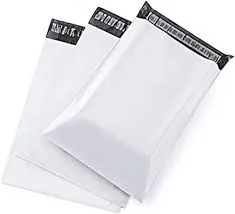Eco-friendly Nappy Sacks for Sustainable Baby Care Solutions
The Importance of Biodegradable Nappy Sacks in a Sustainable Future
In our increasingly eco-conscious world, the need for sustainable alternatives to everyday products has become more pressing than ever. One such product that requires our attention is the humble nappy sack. Traditionally, plastic nappy sacks have contributed significantly to landfill waste. However, the emergence of biodegradable nappy sacks offers a promising solution that aligns with our collective goal of reducing environmental impact.
Biodegradable nappy sacks are designed to break down naturally over time, unlike their plastic counterparts which can take hundreds of years to decompose. This feature is essential as millions of nappies are discarded daily around the globe. According to estimates, the UK alone generates around 3 billion disposable nappies each year, leading to a staggering amount of waste. By switching to biodegradable options, we can mitigate this environmental burden significantly.
The materials used to produce biodegradable nappy sacks differ from traditional plastics. They are typically made from renewable resources such as cornstarch, vegetable oils, and other plant-based substances. These materials not only decompose more quickly in a composting environment but also do not release harmful chemicals into the soil during the process. This means that when biodegradable nappies and their sacks break down, they contribute to the nutrient content of the soil rather than polluting it.
One of the key benefits of biodegradable nappy sacks is their contribution to a circular economy. A circular economy aims to minimize waste and make the most of resources. By utilizing biodegradable products, we support systems that prioritize reuse, recycling, and sustainability. Families choosing biodegradable nappy sacks are not just opting for a product that is kinder to the environment; they are also making a conscious effort to be part of a broader movement toward a more sustainable lifestyle.
biodegradable nappy sacks

Moreover, biodegradable nappy sacks can relieve the pressure on waste management systems. Traditional plastic waste requires extensive processing and disposal methods, which can be costly and environmentally damaging. In contrast, biodegradable options can help alleviate some of this pressure because they are designed to break down more efficiently, reducing the volume of waste that ends up in landfills.
The market for biodegradable nappy sacks has expanded in recent years, offering consumers a variety of options. Parents can choose from numerous brands that offer eco-friendly alternatives, with many products certified to meet strict compostability standards. This variety ensures that families can find a solution that fits their values, preferences, and needs. As awareness of environmental issues grows, consumers are increasingly inclined to make choices that benefit the planet, and biodegradable nappy sacks are a straightforward yet effective way to participate in this change.
Another significant factor in favor of biodegradable nappy sacks is the potential health benefits they offer. Many conventional plastic nappy products contain harmful chemicals, such as phthalates and bisphenol A (BPA), which can be detrimental to infants' delicate skin. Biodegradable nappy sacks, made from natural materials, are less likely to contain these harmful substances and can provide a gentler option for babies and toddlers alike.
In conclusion, the transition to biodegradable nappy sacks represents a small but impactful step for families wishing to lessen their ecological footprint. By using products that break down naturally and are made from renewable resources, we contribute to a healthier planet and a more sustainable future. The reduction of plastic waste, the support of a circular economy, and the potential health benefits for children are compelling reasons to consider this eco-friendly alternative. As consumers, we hold the power to drive change through our choices, and opting for biodegradable nappy sacks is a responsible, practical, and necessary step toward a more sustainable world for generations to come.
-
The Best Uses for Small Trash Bags in Daily LifeNewsJul.01,2025
-
Stylish Reusable Grocery Bags TrendsNewsJul.01,2025
-
Shipping Advantages of Using Bubble Envelopes BulkNewsJul.01,2025
-
How Compostable Mailing Bags Reduce Environmental ImpactNewsJul.01,2025
-
Environmentally - Friendly Bulk Poly MailersNewsJul.01,2025
-
Eco Friendly Custom Laminated Tote BagsNewsJul.01,2025
-
Have the freedom of customizing your custom mailers any way you want! Our dedicated packaging support will help deliver you the mailing experience you need to elevate your shipping experience to the next level! Start making a strong impression on your customers and stand out from your competitors! -
LIYA uses high quality raw materials which directly purchased from large enterprises domestic and overseas such as PetroChina, Sinopec, Sabic, Equate, ExxonMobil, Dow Chemical, Total, and Borouge, ensuring the price advantage and quality of the raw materials. -
LIYA uses high quality raw materials which directly purchased from large enterprises domestic and overseas such as PetroChina, Sinopec, Sabic, Equate, ExxonMobil, Dow Chemical, Total, and Borouge, ensuring the price advantage and quality of the raw materials.





